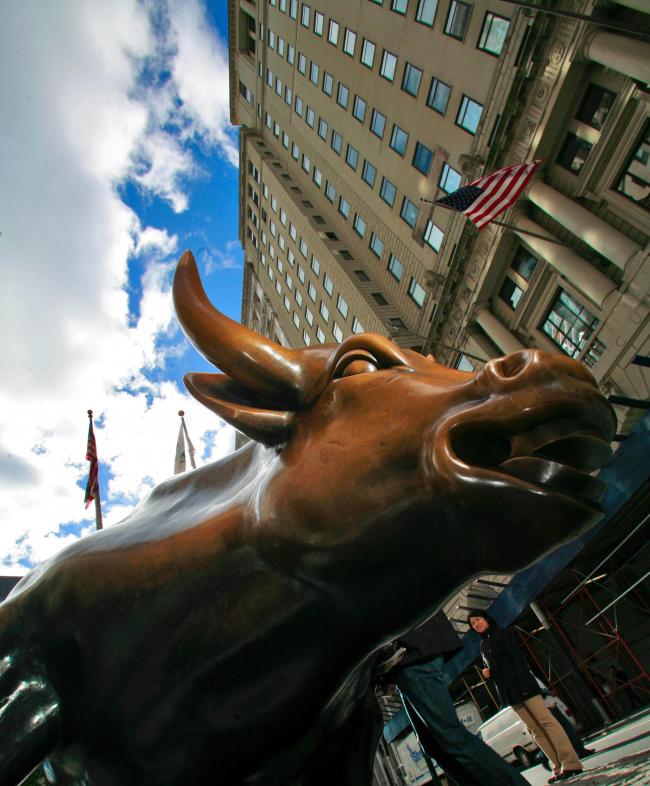(Bloomberg) -- A seemingly bullish backdrop for U.S. stocks starts to disappear as Deutsche Bank AG (DE:DBKGn) delves deep into the the Treasury market.
Ultra-low yields have been cited as a key driver of the rally in equities under the theory that they push investors toward riskier assets with higher potential returns. But when Dominic Konstam, the global head of rates research at the bank, examined the bond market, he found underlying dynamics suggesting the upside to equities is less than 5 percent through year-end 2018. That’s a far cry from the 14 percent surge in the S&P 500 Index envisaged by chief global strategist Binky Chadha if U.S. tax legislation is enacted.
Konstam’s analysis, published Dec. 1, zeroes in on the evolution of the term premium, the notoriously difficult-to-measure difference between the expected return from holding a longer-term bond compared with rolling over short-term notes. The persistent decline in this metric has been the dominant source of downward pressure on Treasury yields in 2017.
A previous study from Deutsche Bank found that a 1 standard deviation jump in the term premium would be associated with a 2.5 percent retreat in the S&P 500 Index. A rise in the term premium generally reflects concern over how two key macroeconomic variables -- inflation and short-term policy rates -- will evolve over the lifetime of the bond.
But a more thorough examination showed that the stock market’s reaction was determined by which of those two variables spurred the shift. The strategist’s modeling of the recent movements of the two-year term premium showed the drop is wholly attributable to a decline in the inflation component -- and "falling inflation risk is negative for equities." It’s been only modestly offset by an increase in the real rate portion.
“A stable-to-lower term premium can be a positive backdrop for equities, but if it comes with real term premium rising, equity investors should be wary,” the strategist writes.
Konstam says the term premium will remain fairly flat next year. But under the surface, the trends of rising policy rate uncertainty and the market’s growing conviction in its outlook for inflation will endure.
That adds up to "a fairly negative combination for stocks," he concludes.
